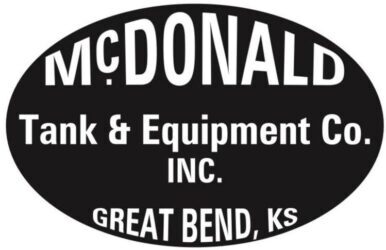Aboveground Storage Tanks
Petroleum products, including gasoline, diesel fuel, biofuels, lube oils, and engine oils, play an indispensable role in farm operations, commercial pesticide application businesses, and American commerce as a whole. However, the decision to store large quantities of these products in aboveground storage tanks (ASTs) at your farm or business is a complex one that hinges on individual operations, storage container types, and personal risk-benefit assessments. This executive summary delves into the key considerations surrounding on-site petroleum product storage, addressing potential risks and benefits, regulatory compliance, and best management practices.
Risk and Benefit Assessment
The decision to store petroleum products on-site must account for various factors, including:
- Environmental Concerns: Potential soil and water contamination due to spills, surface, and groundwater contamination.
- Security Issues: Theft and vandalism risks.
- Regulatory Compliance: Adherence to local, state, and federal regulations, inspections, and enforcement actions.
- Financial Implications: Increased insurance costs, reduced cash flow, and zoning restrictions.
- Operational Efficiency: Quick and easy access, savings through uninterrupted productivity, and assured access to specific fuels.
It is widely acknowledged that the operational convenience and cost advantages of on-site storage often outweigh the potential problems. However, these risks can be effectively managed through safety, security, environmental, and regulatory guidelines.
The Evolution of Storage
Over the past two decades, the preference for aboveground storage tanks (ASTs) has risen in both farming and commercial sectors. This shift can be attributed to the substantial costs associated with cleaning up leakage from buried tanks, which contaminate private wells and community water supplies. Consequently, stricter federal and state regulations have led to the adoption of ASTs.
Advantages of ASTs
Properly engineered and installed ASTs offer numerous benefits:
- Leak Detection: Leakage is easily detectable and quickly containable.
- Visual Inspection: Facilitate visual inspection and corrosion prevention.
- Mobility: ASTs can be safely relocated, enhancing property value and reducing risk.
- Compliance: ASTs align with federal regulations, minimizing environmental risks.
- Safety: Avoid the extensive environmental problems posed by buried tanks.
However, ASTs are not without drawbacks, such as vulnerability to accidents, theft, vandalism, and adverse aesthetic impact.
Best Management Practices
To ensure the safe and efficient operation of ASTs, implementing best management practices is essential:
- Proper Placement: Consider safety and accessibility, locating tanks at least 50 feet away from buildings, water sources, power lines, and traffic patterns.
- Support Infrastructure: Use reinforced concrete pads or suitable supports to prevent corrosion and enable inspection.
- Grounding: Ground tanks to prevent static discharge.
- Labeling: Clearly identify tank contents, hazards, and warnings.
- Barriers: Install barriers to prevent vehicular contact with tanks.
- Electrical Safety: Ensure explosion-proof wiring and equipment.
- Emergency Shutoff: Place emergency shutoffs at a safe distance from tanks.
Financial Considerations
On-site storage of petroleum products offers cost benefits, including easy access and tax breaks for off-road agricultural diesel use. However, these advantages should not overshadow the importance of proper management to mitigate risks effectively.
Conclusion
On-site storage of petroleum products, while beneficial, necessitates careful consideration of risks and implementation of best management practices. By adhering to safety guidelines, property owners can reduce the environmental, financial, and security risks associated with ASTs. Ultimately, well-managed on-site storage enhances operational efficiency, ensures compliance with regulations, and safeguards the environment and community. It is imperative for farm managers and business owners to prioritize safety and responsible petroleum product storage practices to reap the benefits while minimizing potential liabilities.
